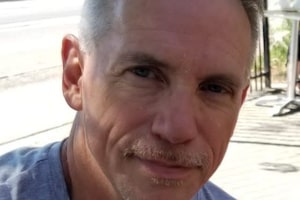FDIC representatives Luis Mayorga and Igor Fayermark speak with customers outside of the Silicon Valley Bank headquarters in Santa Clara, California, U.S. March 13, 2023. REUTERS/Brittany Hosea-SmallBRITTANY HOSEA-SMALL/Reuters
John Rapley is a political economist at the University of Cambridge and the managing director of Seaford Macro.
I always get a chuckle when I hear someone talk about “real money,” as if it is something material. Because as the collapse of Silicon Valley Bank once more reveals, money is little more than an expression of faith, a collective delusion. Once people stop believing it’s there, lo and behold, it disappears.
The fall last week of the United States’s 16th largest bank underscores an inherent irony in that delusion. Over the years, with successive financial crises, the powers that be have repeatedly intervened to buttress people’s faith in the system. But the more they did so, the more they showed how easy it was – and chipped away at the faith holding everything together.
Now this faith, as the Silicon Valley Bank saga demonstrates, has become an incredibly fragile thing.
A bank run, what had happened at SVB, is essentially a crisis of faith. SVB was not technically insolvent. It had assets on its books that were worth more than the portfolio of loans it had outstanding. Its problem was that those assets were largely long-dated treasury paper. And because of the way bond markets work, when interest rates rise, the market value of bonds declines. That’s not a problem if you hold them to maturity – the government has already committed to pay you the face value, not the market value, when you redeem the bond. But if you are forced to sell early, you have to offer a discount.
When things began turning south in Silicon Valley last year, SVB’s clients began to need a bit more cash than usual. This forced the bank to go back to the market to raise share capital to tide it over until its bonds reached maturity. That’s when the problems began.
There was no particular reason to panic. Nobody actually needed all their money, and the bank could reasonably have assumed it would find investors willing to take a share in its eventual profits. Had depositors continued with business as usual, the bank would have been able to keep operating.
But it’s like the scene of a fire. If everyone lines up and exits at a measured pace, everyone can get out of the building before the flames engulf them. If only one person skips the line, everyone rushes at once, the door gets crammed and everyone dies. That’s the psychology of a bank run. Once you hear one person has withdrawn all their cash, you think there will be none there by the time you turn up. So you join the crowd rushing for the exits.
And boy, oh boy, did some of the tech bros scream loudly they were withdrawing all their cash. The panic began, at which point investors wouldn’t touch SVB, causing its share price to crash and the regulators to step in. At that point, it took a higher authority to restore everyone’s belief in the system. Fearing that a widespread loss of faith would lead to a collapse of the regional banking system, the U.S. Federal Reserve and government acted together to assure everyone that they would provide all the money needed to keep the banking system solvent.
But this is where it gets really tricky. These repeated assurances they will backstop everyone’s money, which the Fed has been doing for more than 30 years now, has required the Fed to keep offering lots of money. That money is circulating in the economy. And with the money supply rising much faster than the supply of goods and services, people’s faith in money itself is starting to falter. That takes the form of inflation. It’s that loss of belief in the dollar that has driven the value of the cryptocurrencies that some of SVB’s clients traded in to the stratosphere, as buyers began looking for alternatives to a currency in which they hold less and less faith.
So the Fed faces a dilemma. It can restore faith in the banking system, or it can restore faith in the dollar. Right now, it doesn’t look like it can do both. Markets are already pricing in an expectation it will reverse its tight money policy, slash interest rates, and (presumably) let inflation rip. And if that happens, get ready for an even bigger crisis down the road.
 John Rapley
John Rapley